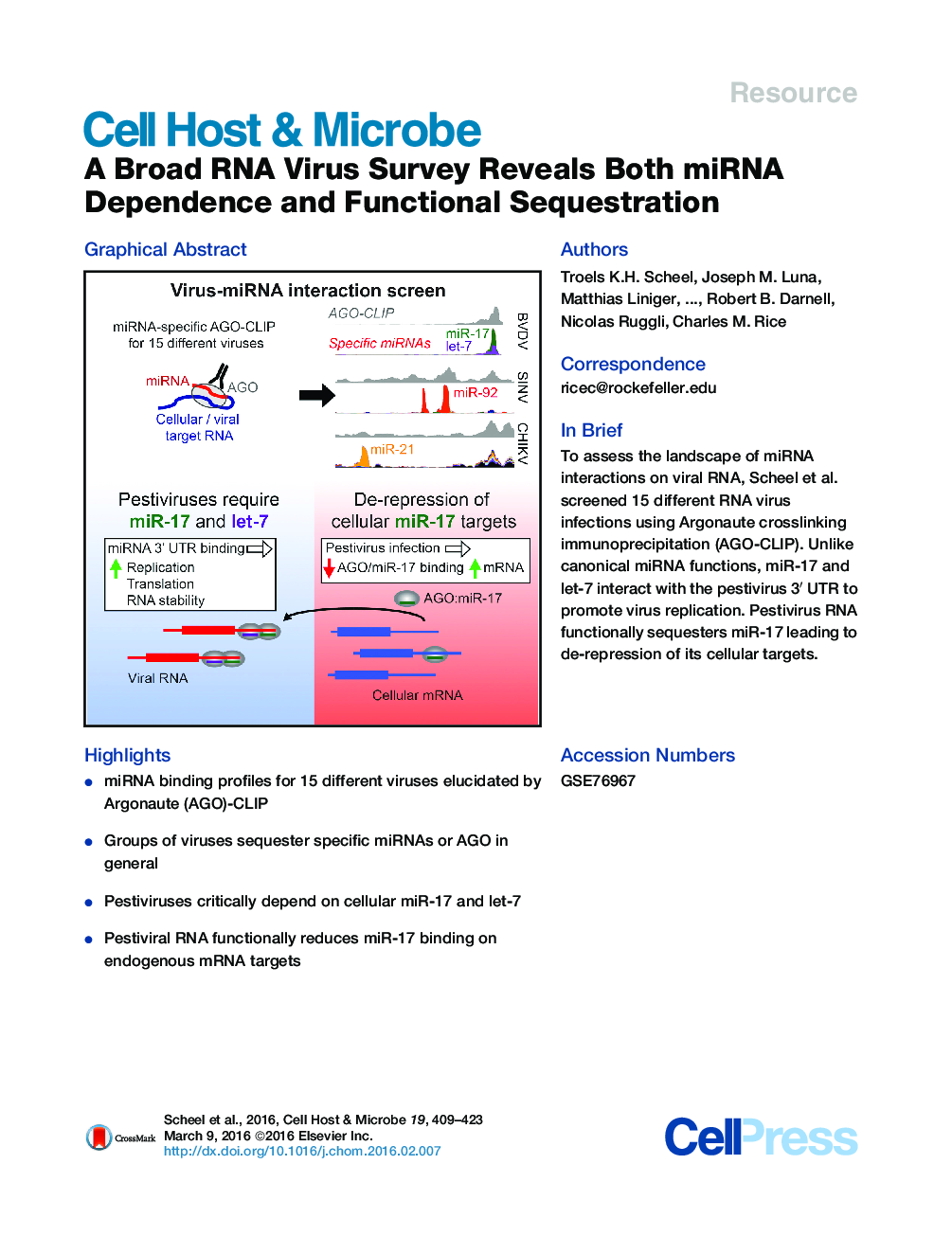| کد مقاله | کد نشریه | سال انتشار | مقاله انگلیسی | نسخه تمام متن |
|---|---|---|---|---|
| 4360854 | 1301319 | 2016 | 15 صفحه PDF | دانلود رایگان |

• miRNA binding profiles for 15 different viruses elucidated by Argonaute (AGO)-CLIP
• Groups of viruses sequester specific miRNAs or AGO in general
• Pestiviruses critically depend on cellular miR-17 and let-7
• Pestiviral RNA functionally reduces miR-17 binding on endogenous mRNA targets
SummarySmall non-coding RNAs have emerged as key modulators of viral infection. However, with the exception of hepatitis C virus, which requires the liver-specific microRNA (miRNA)-122, the interactions of RNA viruses with host miRNAs remain poorly characterized. Here, we used crosslinking immunoprecipitation (CLIP) of the Argonaute (AGO) proteins to characterize strengths and specificities of miRNA interactions in the context of 15 different RNA virus infections, including several clinically relevant pathogens. Notably, replication of pestiviruses, a major threat to milk and meat industries, critically depended on the interaction of cellular miR-17 and let-7 with the viral 3′ UTR. Unlike canonical miRNA interactions, miR-17 and let-7 binding enhanced pestivirus translation and RNA stability. miR-17 sequestration by pestiviruses conferred reduced AGO binding and functional de-repression of cellular miR-17 targets, thereby altering the host transcriptome. These findings generalize the concept of RNA virus dependence on cellular miRNAs and connect virus-induced miRNA sequestration to host transcriptome regulation.
Graphical AbstractFigure optionsDownload high-quality image (232 K)Download as PowerPoint slide
Journal: - Volume 19, Issue 3, 9 March 2016, Pages 409–423